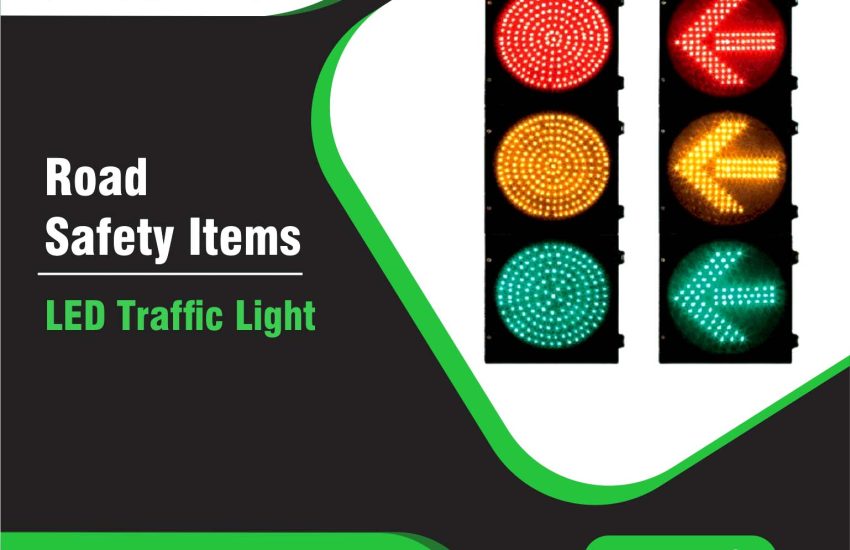LED Traffic Light In the modern world of traffic management, the LED traffic light has become an essential component in ensuring safety, efficiency, and sustainability. As cities continue to grow, the need for energy-efficient and durable traffic signal systems has never been more important. LED traffic lights not only provide brighter, more visible signals but also offer significant energy savings, reducing both maintenance costs and environmental impact.
What is an LED Traffic Light?
An LED traffic light is a type of traffic signal that uses Light Emitting Diode (LED) technology instead of traditional incandescent bulbs or halogen lamps. These lights are widely used in traffic signal systems to manage the flow of traffic at intersections, pedestrian crossings, and in other traffic management applications.
Key Specifications of LED Traffic Lights
- Power Consumption:
One of the main advantages of LED traffic lights is their low power consumption. They typically consume between 10W to 50W, depending on the size and type of the signal. This is significantly lower than traditional halogen or incandescent traffic lights, which can consume much more energy. - Lifespan:
LED traffic lights have an extremely long lifespan, usually ranging between 50,000 to 100,000 hours. This means they can last for up to 10 years or more without requiring replacement. This durability minimizes maintenance costs and ensures fewer disruptions in traffic flow. - Brightness and Visibility:
LED traffic lights offer superior brightness, which enhances their visibility even under direct sunlight or adverse weather conditions. The high luminance of LED signals ensures they are visible from greater distances, improving the safety of drivers and pedestrians. - Color Options:
LED traffic lights are available in different color configurations, such as red, yellow (amber), and green. These colors can be tailored for various purposes, including controlling vehicle and pedestrian movements. - Environmental Impact:
LED traffic lights are environmentally friendly as they are free from hazardous materials like mercury, unlike traditional halogen lights. Additionally, they reduce energy consumption, contributing to lower carbon emissions and promoting eco-friendly traffic management solutions. - Weather Resistance:
LED traffic signals are designed to withstand extreme weather conditions, such as rain, snow, heat, and humidity. They are also protected against water ingress with high IP ratings (Ingress Protection), which ensures their reliability in all climates. - Integration with Smart Systems:
Many modern LED traffic lights are designed to integrate seamlessly with smart traffic management systems, allowing for remote monitoring, real-time adjustments, and more efficient traffic flow. Adaptive signal control can optimize traffic patterns based on real-time data, enhancing traffic management in urban areas.
Advantages of LED Traffic Lights
- Energy Efficiency:
The energy-saving nature of LED lights leads to significant reductions in electricity consumption. This not only helps lower the carbon footprint of cities but also saves governments and municipalities money on energy costs. - Reduced Maintenance Costs:
Due to their long lifespan and durability, LED traffic signals require fewer replacements and less frequent maintenance compared to traditional traffic lights, which reduces overall maintenance costs. - Faster Response Time:
LED traffic lights have faster switching capabilities, allowing for quick changes in signal colors. This responsiveness improves traffic flow, especially during peak hours. - Better Control Over Traffic:
LED traffic lights provide better control over traffic patterns and can easily be integrated with intelligent traffic systems to improve the overall flow, reduce congestion, and minimize the risk of accidents. - Cost-Effectiveness:
The initial installation cost of LED traffic lights may be higher than traditional lights, but over time, the reduced energy consumption and lower maintenance costs make them more cost-effective in the long run. - Improved Safety:
With their enhanced visibility, LED traffic lights contribute to better safety for both drivers and pedestrians. The bright and distinct colors reduce the chances of accidents caused by misinterpretation of signals.
Common Applications of LED Traffic Lights
- Urban Intersections:
LED signals are commonly used at city intersections to manage traffic efficiently and reduce congestion. - Pedestrian Crossings:
Pedestrian signals using LED technology ensure that walkers can easily identify when it is safe to cross the road. - Railway Crossings:
LED traffic lights are employed at railway crossings to warn vehicles of oncoming trains, improving public safety. - Highways and Toll Booths:
On highways and toll booths, LED signals manage traffic flow and toll collection processes effectively, minimizing delays.
Conclusion
LED Traffic Lightlong lifespan, and superior visibility, they are becoming the standard for traffic control systems around the world. Whether it’s reducing energy consumption, cutting down on maintenance costs, or enhancing road safety, LED traffic lights are a smart investment for cities aiming to improve their infrastructure and offer better services to their citizens.


